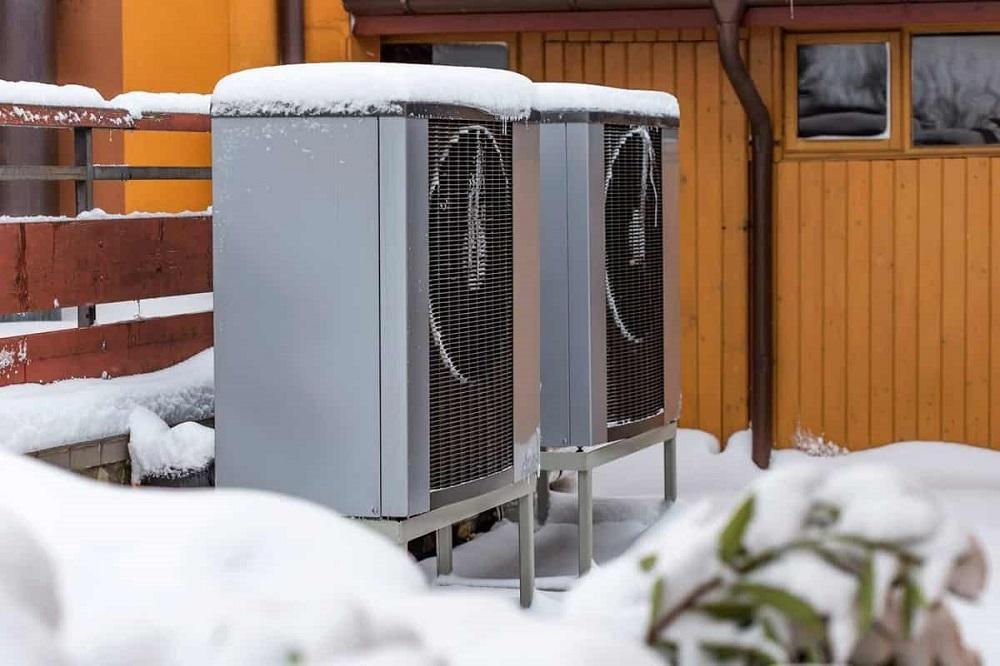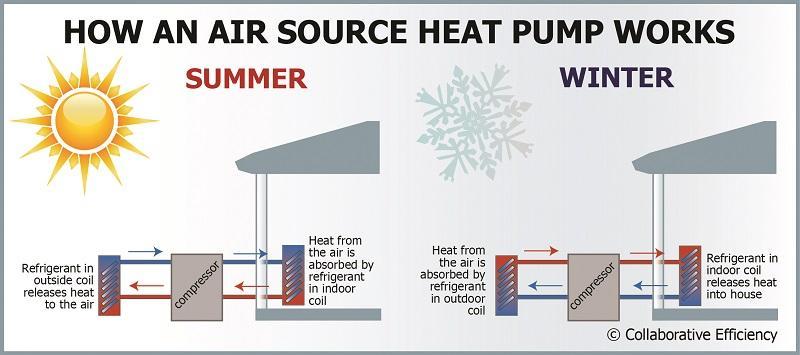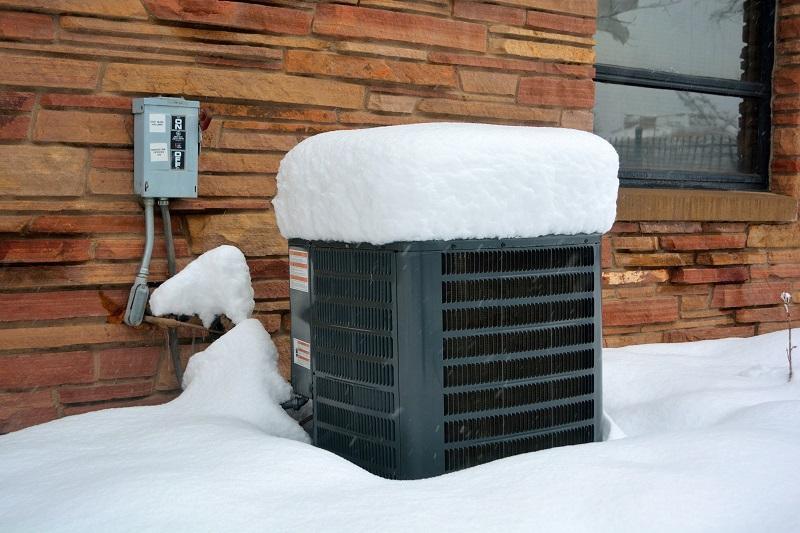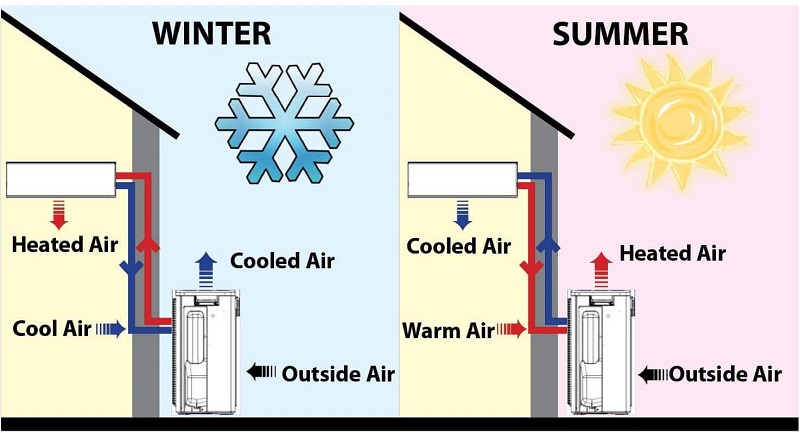How to use a heat pump in winter? When the temperature drops and other energy bills get higher you might wonder: how can I use my heat pump most efficiently? You need to take some action to use your heat pump efficiently, especially in cold weather. So, follow this new blog at Linquip about how to use a heat pump in winter.
What is a Heat Pump and How Does It Work?
A heat pump is an electrical device that extracts and transfers heat from one place to another. It is not a modern technology; it has been used for decades worldwide. It is also an inexpensive alternative to traditional electric heating options. A heat pump can be a very efficient and cost-effective investment if properly used.
A heat pump transfers heat through a process of evaporation and condensation by circulating a substance called refrigerant. A compressor pumps the refrigerant between two coils. The refrigerant is evaporated in one coil at low pressure, removing thermal heat from the environment. The refrigerant is then squeezed to the other coil, where it condenses at high pressure. The heat that was stored earlier in the process at this point is released.
How to use a heat pump in winter
It is very important to know how to use a heat pump in winter. You can get the most out of your heat pump in winter by keeping reading the following 7 tips.
1.Don’t cover the heat pump
Do not keep the heat pump from freezing. If do, the airflow is then blocked, reducing performance or even contributing to mold. The freezing mode helps to prevent the freezing of the heat pump.
2. Buy a smart thermostat
A smart thermostat is a great addition to any central heating system. With a smart thermostat, you can manage central heating more easily, so your energy bills are held down.
3. Forget leaving your heat pump running all-day
One answer to the question, “how to use a heat pump in winter” might be that: a heat pump works very intensely, so give it a break from time to time! Do not run it all day. Take advantage of the heat pump timer instead. Switch the heat pump on in the winter before dawn. Right before you get home at night, set it to come on. It is a more economical way to match the heat pump times with your daily routine, particularly if nobody is home during the day.
4. Clean the filter regularly
The heat pump transfers air, and the air flows through the heat pump via a thin mesh filter. When this dust filter is clean, the heat pump works best. Dirty airflow restricts filters. Get it serviced by a heat pump technician every year if you use it to heat and cool all year round. Instead, a service every two years would be enough if you just cool in summer or heat in winter. In between services, clean the dust every three months to clear the heat pump filters. Make sure that the outdoor area is preserved, clear any surrounding leaves or weeds.
5. Learn the different modes of your heat pump
Take some time to find what is best for your house, in terms of various modes of the heat pump. Typically, the Auto mode is avoided and the heating mode is opted for. In auto mode, the heat pump tries to remain at a certain temperature to maintain equilibrium when the temperature changes in the room. These adjustments can cause a lot of energy waste, and the use of the heat pump by the Auto mode is ineffective. You may also use a dry mode, to dehumidify a damp room, depending on the model of the heat pump. Dry air is easier to heat; so, take this mode into account when the indoor air is high in moisture, particularly when you cook.
6. consider the size and position
besides knowing how to use a heat pump in winter, there are two important things to remember when you install a heat pump for the first time in your home:
- You should weigh up your possible heat pump size relative to the size of the area you want to heat for optimum energy efficiency. It has to work harder to heat a room to the necessary temperature if the heat pump is too small. The heating tension of too much space will also reduce the longevity of your new heat pump. If the heat pump is too big, it will be less effective because you will have to stop it from overheating.
- Keep in mind, however, that the position of your heat pump is both efficiently and aesthetically important. It’s best not to position them near some area where people sit. This is typically why high wall heat pumps are chosen.
7. Don’t heat too many rooms at once
Many heat pumps can heat multiple rooms at once, but it may not always be appropriate to heat several rooms at once. This can take more time to heat your house. Divide your home and concentrate on the main hot points at those periods of the day when you want to relax. This might be the kitchen and bedroom in the morning. Perhaps you would like to shut down the bedrooms at night and turn the heat into the family room. Set up your heat pump timer 45 minutes before bed in the bedrooms. Switch the heat pump out of the living room and all of the other rooms you’re not using when you go to bed at night, and keep the air closed in the doors and curtains.
It can be said that the question, “how to use a heat pump in winter” is frequently heard. We provided some hacks to consider when using a heat pump in cold weather. However, you can register at Linquip if you have any more concerns about how to use a heat pump in winter, and talk to our experts.
Buy Equipment or Ask for a Service
By using Linquip RFQ Service, you can expect to receive quotations from various suppliers across multiple industries and regions.
Click Here to Request a Quotation From Suppliers and Service Providers
Read More On Linquip
- What is Plate Heat Exchanger?
- A General Overview of Heat Pump Problems
- Heat Pumps vs Air Conditioners: The Everlasting Battle
- The Complete Guide To Air Source Heat Pumps Disadvantages
- What Are Air Source Heat Pumps? A Complete Guide
- Parts of Boiler and Their Function in the Boilers
- Working Principle of Plate Heat Exchanger






